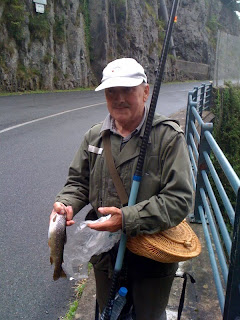
One day I counted up all the years I spent in school. I started with nursery school and kindergarten, ended with college and grad school, and added them all up. Total? Let's just say it's a lot: I couldn't count it on all my fingers and toes. I had to borrow someone else's.
Over that obscene number of years, I took a lot of notes. I outlined arguments of all the major texts on my comprehensive exams. I underlined and highlighted so much, that the original text became hard to decipher. Eventually, I bought second copies of some books, because I found the marginalia in my first copy either distracting -- or just plain wrong. Re-reading my notes decades later, I realize that they say more about me and my state of mind at the time -- than the text itself.
This does not make me proud. I have devoted so much time and energy taking notes, that I failed to simply take note.
Taking note is simply letting something speak to you, in its own voice and on its own terms. Taking note is simply paying attention. In my feverish effort to take notes, I failed to attend to what was right in front of me.
Of course, the visual analogue to taking notes is taking photos. As with all forms of travel, on pilgrimage you see lots of people taking photos -- and lots of them. Yes, it's an excuse to rest up and catch one's breath. But, I fear that photo-obsessed tourists and pilgrims see the entire journey through the lens of a camera -- if they are as obsessed about taking photos as I was about taking notes.
In which case, the camera rules, disciplining the landscape to its eye. Terrain ceases to transform; it becomes the object of the voracious photographic lens. A landscape poses -- and just for you, often with one of your best friends littering the view with a goofy smile. With a camera's lens, the photographer can crop and edit, enlarge or diminish, zoom in or out. A photographer composes a scene, rather than letting what's actually there take her breath away.
I'm not a fan of heavily documented trips.
And yet, I lugged a camera along both pilgrimages, trying to make myself use it for taking note, not taking notes. When I was not successful, viewing the image today merely baffles. When I was successful, though, the image triggers memories of a feeling, a smell, a story, a stretch of the road.
That's using image to take note, rather than using image to take notes.
Thanks to John Rosenberg, who found that bright line. When he read the post entitled "I'd rather be fishing....!" he sent me the image above of a French fisherman we met along the trail that followed the Aspe River. Our band of pilgrims included three avid fishermen -- John among them. When this man realized there was a first language of fishing among our ragged band, he produced his catch.
A brown trout, a luminous moment, and a great memory.
Really, wouldn't we all rather be taking note -- than taking notes.
Patricia Hampl captures the grace of attention, and even if she uses the plural form, "notes," she's talking about "taking note." I excerpt from her essay "Memory and Imagination" in THE DOLPHIN READER (1985):
"Our most ancient metaphor says life is a journey. Memoir is travel writing, then, notes taken along the way, telling how things looked and what thoughts occurred. But I cannot think of the memoirist as a tourist. This is the traveler who goes on foot, living the journey, taking on mountains, enduring deserts, marveling at the lush green places. Moving through it all faithfully, not so much a survivor with a harrowing tale to tell as a pilgrim, seeking, wondering."
Having also spent many years in lecture halls and sanctuaries, I, too, find myself surrounded by a pile of old notes, i.e, "stuff I wanted to remember." One good thing about aging, however, seems to be that even as memory fades, the notes get shorter and more concise ... sometimes just a line or two or even just a picture on a cell phone! jpr
ReplyDeletePS Nice fish!